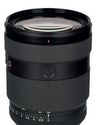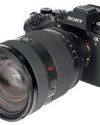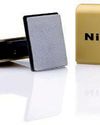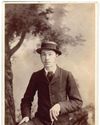
Let’s start, not with a camera, but with an image. Look at the picture of the cat on this page. Notice how the eyes, the fur, every whisker, every wisp of hair, are all pin-sharp. And rest assured, the quality is retained when this image is interpolated to A4 size. Now consider this. The picture was shot more than 23 years ago with a Nikon Coolpix 880, whose total pixel count was just 3.34MP. Cost then: a little under £700. Value now, fully working with battery and charger: £30-40.
Given this, it’s tempting to ponder why you need to invest thousands of pounds on the latest digital gear when it’s still possible to get images of this quality from cameras that cost less than £50. That said, it has to be admitted that today’s supersonic, all-singing, all-dancing, whistle-blowing, bell-ringing digital cameras are not merely in a different league to these 50 quid wonders. They are a whole new species.
Stratospheric sums of megapixels, large sensors, mirrorless viewfinders, megaautofocus points, facial recognition, touchscreen operation, a multitude of shooting modes, time-lapse control, voice recording, Bluetooth and Wi-Fi connectivity, text tagging, auto-correct function, best shot selectors, HD video… Be honest – how much of this do you really need?
The fact is, if you are happy to accept a few compromises, you can attain quality images from a small APS-C sensor that uses ten or fewer megapixels; used sensibly, you can make do with only a few autofocus points; and the four basic exposure modes will cover most circumstances.
CCD versus CMOS sensors
Denne historien er fra April 23, 2024-utgaven av Amateur Photographer.
Start din 7-dagers gratis prøveperiode på Magzter GOLD for å få tilgang til tusenvis av utvalgte premiumhistorier og 9000+ magasiner og aviser.
Allerede abonnent ? Logg på
Denne historien er fra April 23, 2024-utgaven av Amateur Photographer.
Start din 7-dagers gratis prøveperiode på Magzter GOLD for å få tilgang til tusenvis av utvalgte premiumhistorier og 9000+ magasiner og aviser.
Allerede abonnent? Logg på

Calling The Shots: A Queer History of Photography
Offering an unprecedented view of photographic history through a queer lens, this is a wonderful and powerful book, says

Large-aperture standard zoom, too
SONY has also revealed a new premium standard zoom, the FE 28-70mm F2 GM.

Super-fast, high-res Sony Alpha Ai II
SONY has announced its new professional full-frame flagship camera, the Alpha A1 II.

39 awesome accessories
Our round-up of the best accessories we've used and reviewed this year, along with some old favourites. There's something here for every budget, starting from just £7, including tripods, bags, filters and much more

Such a thing as society
This autumn sees the launch of a major new book and exhibition devoted to examining the multiplicities of photography during 1980s Britain. Peter Dench finds out more

Join Club
The sociable Canvey Island Photographic Club is keen to grow its in-person meet ups

Capturing flight
Winners and finalists of Bird Photographer of the Year share their tips for success with Hollie Latham Hucker

140 years of change
AP has become the world’s oldest surviving consumer photo magazine because we have moved with the times, says Nigel Atherton

Preserving history in platinum
A deep dive into the meticulous art of platinum printing, and the collaboration between the Royal Geographical Society and Salto Ulbeek. Mike Crawford explores how they brought historical photographs to life with enduring beauty and precision

Life in the past lane
What was life like for an amateur photographer in 1884? John Wade takes a trip back in time